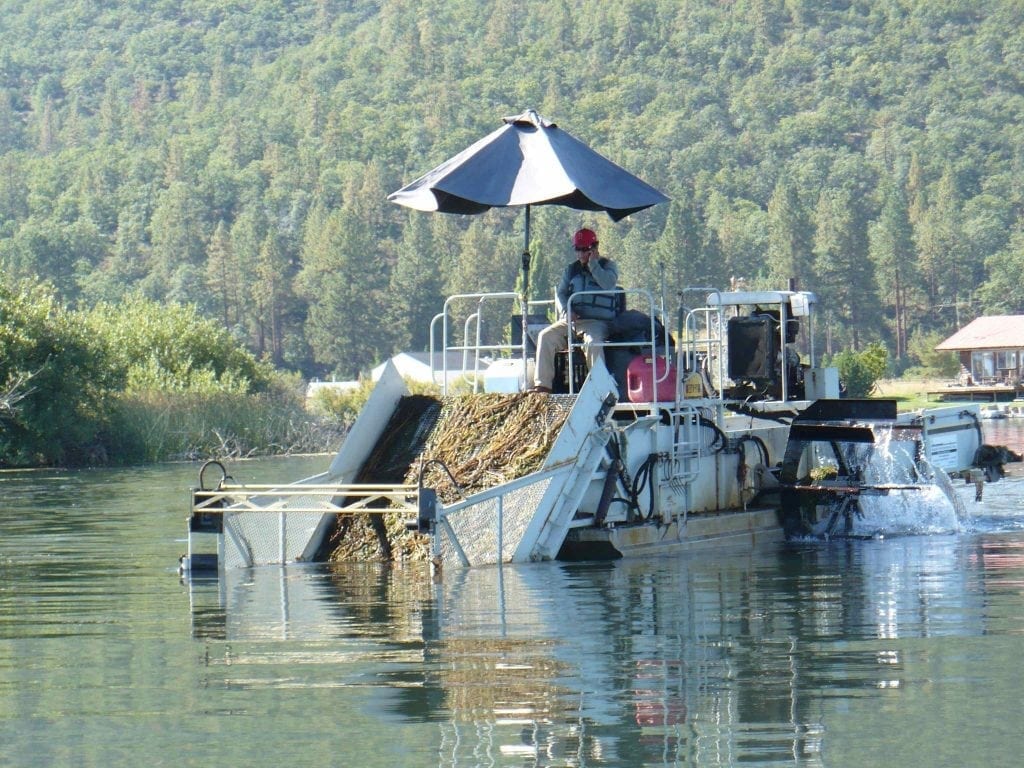
This fall, PGE committed $20k in funding to help launch a pilotprogram that will explore the use of the milfoil weevil as a biological control for EWM.
Under their Federal Energy Regulatory Commission hydropower license (FERC project 2687), PGE is required to maintain the structural integrity of the Fall River’s extensive levee system.
EWM threatens the integrity of this levee system by impeding natural flows, which raises the water level of the river and puts pressure on the levees. PGE monitors this pressure and at certain “action” levels, they begin mechanically removing the milfoil to accelerate flows and relieve pressure.
Mechanical removal of milfoil is costly. According to Chip Stalica, former Hydro-Operations Manager for the Fall River, harvesting can cost tens of thousands of dollars each year depending on how bad the seasonal outbreak is. Another major concern with harvesting is that it possibly spreads milfoil by fragmenting the plant, allowing the highly invasive species to regenerate elsewhere throughout the river. To avoid this, PGE uses an aquatic harvester that captures plant fragments as it cuts. The cuttings are then off-loaded onto dry land. Unfortunately, some fragments escape the harvester and float down river, potentially exacerbating the problem.
Due to the money and time it takes to harvest EWM, PGE supports research that explores the potential for alternative management strategies. PGE’s donation will allow FRC and the USDA Agricultural Research Service to work together to explore potential management strategies.